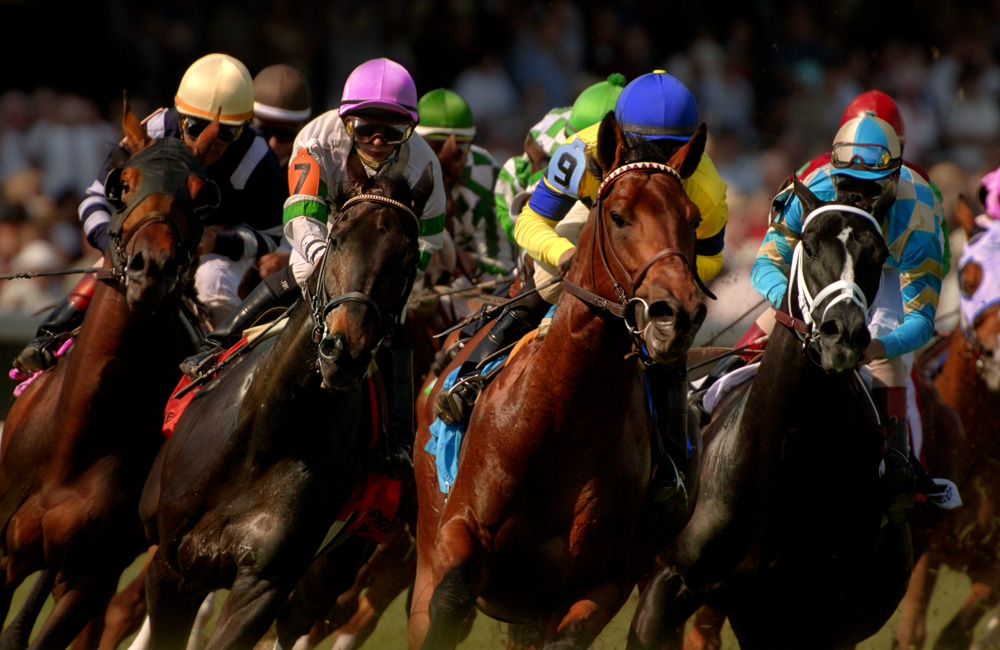The Indian Derby, run at Mahalakshmi Race Course, is the highlight of Mumbai's racing year. Traditionally run on the first Sunday of February, the race is known as the "Crown Jewel of the Triple Crown".
It is restricted to four-year-old horses, both colts and fillies, but is almost of secondary importance to the activities surrounding the event. Serious punters are comprehensively outnumbered on Derby day as the course overflows with well-heeled viewers. As personalities go however, it has been the colorful presence of Dr Vijay Mallya that has brought that added dosage of high glam, glitz, style, and fashion into the sport.
Historical Background
Racing in India is a legacy of the British Raj. Though it is well documented that the British were always serious about the business of efficiently running the Empire, they invariably found time for sport and recreation, and wherever they went, they created the necessary infrastructure for its pursuit. It must be remembered that in India, the British presence depended for a very long time on its military strength. The armies of the 18th and 19th centuries were cavalry-oriented and the overwhelming involvement with horses inevitably meant that equine sports like fox-hunting, polo, point-to-point racing, steeple chasing and flat-racing came to the fore. Almost every cantonment in India had a racecourse and race meetings were organized as far back as the 18th century.
Present status
The balance sheets of a majority of the race clubs are awash in red ink and owners are deserting the game in droves, as prize money is unable to keep pace with inflation. What is keeping the game going is the patronage of Mallya and other Indian booze barons as too local industrialists. Another silver lining is that Indian racehorses have proved themselves in the markets of Singapore and Malaysia and now even Dubai, therefore a continuous inflow of capital for the better racehorses is likely.
Race Tracks
All racetracks in India, except Delhi, are variations of the round/oval in shape, and are generally level. Mumbai has a full-fledged season, Madras holds Monsoon racing on the dirt training track. Kolkata, Hyderabad and Pune hold their Monsoon Meetings on Monsoon Tracks (parallel to the main tracks), which are turf tracks with better drainage. Sand or tan tracks are used for training, all of which takes place at the racecourses. There are no private training centers.
Metric System
Indian racing switched over to the metric system of weights and distances from the 1962-63 season. In handicaps, bottom weight is usually 47.0 kg., while top weight is usually 59.0 kg.
Sponsorship
Of racing in India is significant. McDowell & Co. Ltd., United Breweries Ltd., Herbertsons Ltd., VST Ltd., Shaw Wallace Group, ITC Ltd., etc. have been amongst the major sponsors.
Betting
Betting is permitted on Tote as well as with the bookmakers operating at the racecourses. Volumes are significant - legal Tote wagering is estimated at Rs 2 billion annually, with a similar figure for legal betting with licensed bookmakers. All centres conduct "off-course" or "inter-track" wagering on races run at other centers, mainly with live TV coverage at the receiving course. There is no legal telephone betting, smart card wagering or internet betting. Programmes are so arranged by mutual consultation that overlap of racing days is kept to a minimum. On occasions, morning racing is held for this purpose.
Statistics
This time 1,072 horses took part under the guidance of 42 trainers. Stake money paid out: Approx. Rs 8.3 million. With attendance of 30,000 jet set biggies.
Whether these facts lure you to the race course or not, if you get yourself invited to this annual event make sure you pick the right outfit. Because this is truly British Raj redux with all the propah English gentry trimmings - hats, gloves, cucumber sandwiches, scones... The magnificent thoroughbreds pounding the turf on race day are merely the sideshow.









